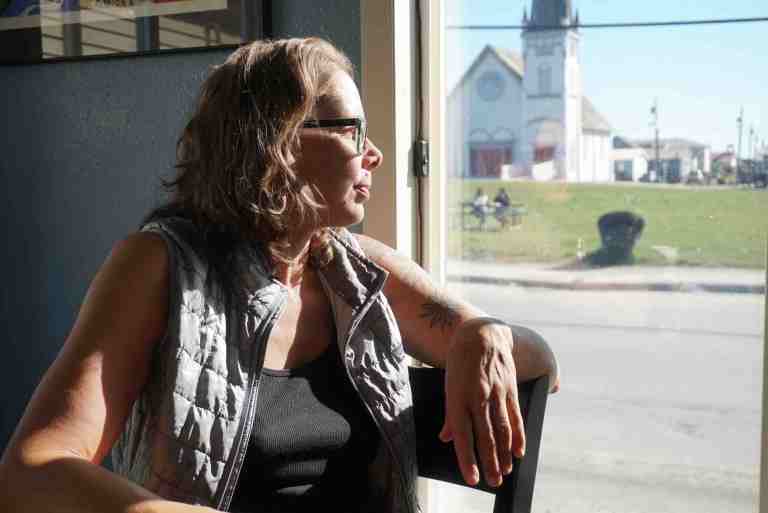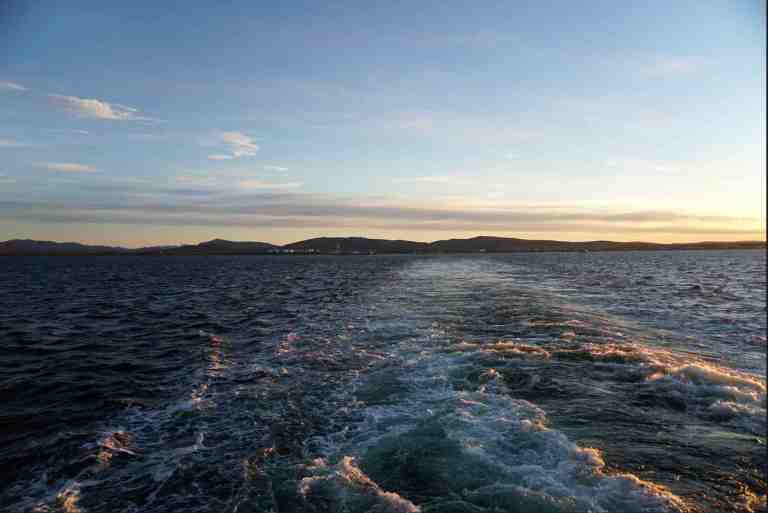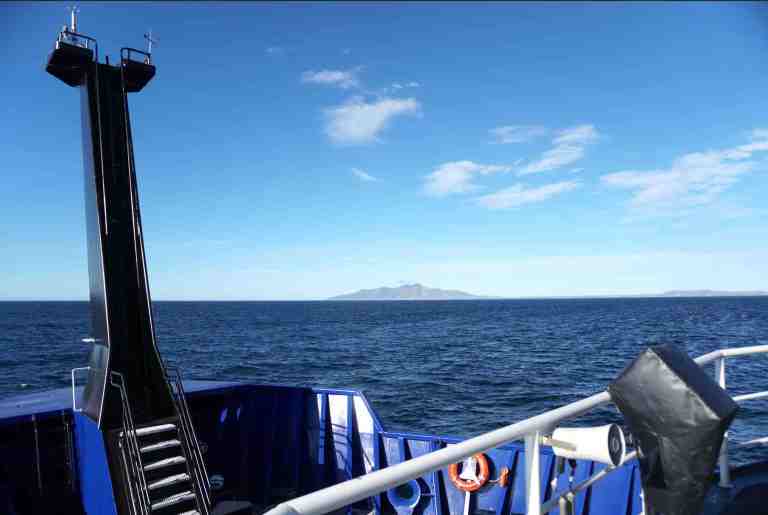7 September 2016
Sikuliaq Dispatch: No Place Like Nome
Posted by larryohanlon
This is the latest in a series of dispatches from scientists and education officers aboard the National Science Foundation’s R/V Sikuliaq. Read more posts here. Track the Sikuliaq’s progress here.
By Kim Kenny, September 3, 2016
The man I met on the plane ride here was right when he said the roads in Nome lead to rivers and to nowhere. On Thursday some of us took a drive away from town and into the hills. We passed tiny groups of houses, lone huts in a vast landscape, streams with sockeye salmon next to moose tracks, and Salmon Lake. We saw a white speck in the distance, which, upon photographic review, was a brown bear. And we huddled behind shrubbery to watch a herd of musk ox. I sat in the bed of the truck and returned with a layer of dust on my face and hair, but it was worth it.
Nome has about 3,400 residents. It feels barren and spread-out. There are seemingly random pieces of construction equipment strewn about, on lawns or alongside the road. The center of town is marked by a church and a “Welcome to Nome” sign highlighting the gold panning that has drawn people here.
On Friday, Jil, Selina and I went on an adventure to see an old, washed-up ship. We still don’t know the full story behind it, but we’ve heard it was built in the 1970s and was used to dredge up minerals. None of the structures looked like any ship I’m familiar with. It felt like exploring a dystopian relic. After climbing all around and seeing a couple local kids, we walked back to the Sikuliaq along the beach. Closer to the dock, we saw a few foxes, which multiple people have spotted since we got to Nome on Wednesday. A local passed by in a truck and said there’s a litter of four and the guys at the construction site will often leave some food for them. Friday was our last night on shore for a while, and so most people went out for a few beers at the Nugget. Some people saw the northern lights on their way home. I hope we get another chance to see them while out at sea.










 We left Nome at 8am this morning. The sway of the ship will be a new constant for the next four weeks. And the colors of our environment will no longer include greens, reds, yellows, oranges (except during sunrise and sunset), but instead blues and whites and grays. We saw Russia in the distance off the port side this afternoon, followed by Little Diomede and Big Diomede, two islands, the first owned by the U.S. and the other by Russia. We also saw about a half dozen whales. No one was able to definitively identify them, but Herbert thinks they were grey whales. Herbert Tagarook is the community observer from Wainwright onboard to make sure our science doesn’t disturb the whales, and to observe how operations are done. Hoping to post a good interview with him soon.
We left Nome at 8am this morning. The sway of the ship will be a new constant for the next four weeks. And the colors of our environment will no longer include greens, reds, yellows, oranges (except during sunrise and sunset), but instead blues and whites and grays. We saw Russia in the distance off the port side this afternoon, followed by Little Diomede and Big Diomede, two islands, the first owned by the U.S. and the other by Russia. We also saw about a half dozen whales. No one was able to definitively identify them, but Herbert thinks they were grey whales. Herbert Tagarook is the community observer from Wainwright onboard to make sure our science doesn’t disturb the whales, and to observe how operations are done. Hoping to post a good interview with him soon.
We finished our safety briefing this morning. Yesterday we watched two thrilling films, the first on sexual harassment and the second on safe UNOLS operations. (Apparently sexual harassment is a big issue on research ships, where a confined space is your work environment and also your home environment.) John, the second mate, walked us through how to put out a fire. I learned the number one cause of fires on a ship is from lint in dryers. So the dryers are checked and cleaned out multiple times a day. Today we got to put on the big orange gumby suits that might save our lives were we to need to abandon ship. And we were told how to handle a man overboard situation, but that if we did actually fall overboard, it would mean near-certain death, because we’d freeze before we could be rescued. So that’s pretty terrifying. I’ve kept a firmer grip on the handrails.
The rest of the day was filled with scientific prep work and getting accustomed to the ship.

Some of the 42 aboard. From from the back left: Jil Callaghan, Laurie Juranek, Rachel Sipler, Jenna Spackeen, Miguel Goni, Selina Lambert, Dale Hubbard, Burke Hales, Herbert Tagarook, Katie Harding, Brianna Stanley, Kristie Okimoto, Deborah Bronk, Brita Irving, Kylie Welch, Aaron Jones, and Carries Weekes.
Stay tuned for a video tour of the ship and an update as we travel through the Bering Strait!
— Kim Kenny is a freelance journalist who specializes in science writing and multimedia. This post was originally published on thedynamicarctic.wordpress.com



























 GeoSpace is a blog on Earth and space science, managed by AGU’s Public Information staff. The blog features posts by AGU writers and guest contributors on all sorts of relevant science topics, but with a focus on new research and geo and space sciences-related stories that are currently in the news.
GeoSpace is a blog on Earth and space science, managed by AGU’s Public Information staff. The blog features posts by AGU writers and guest contributors on all sorts of relevant science topics, but with a focus on new research and geo and space sciences-related stories that are currently in the news.